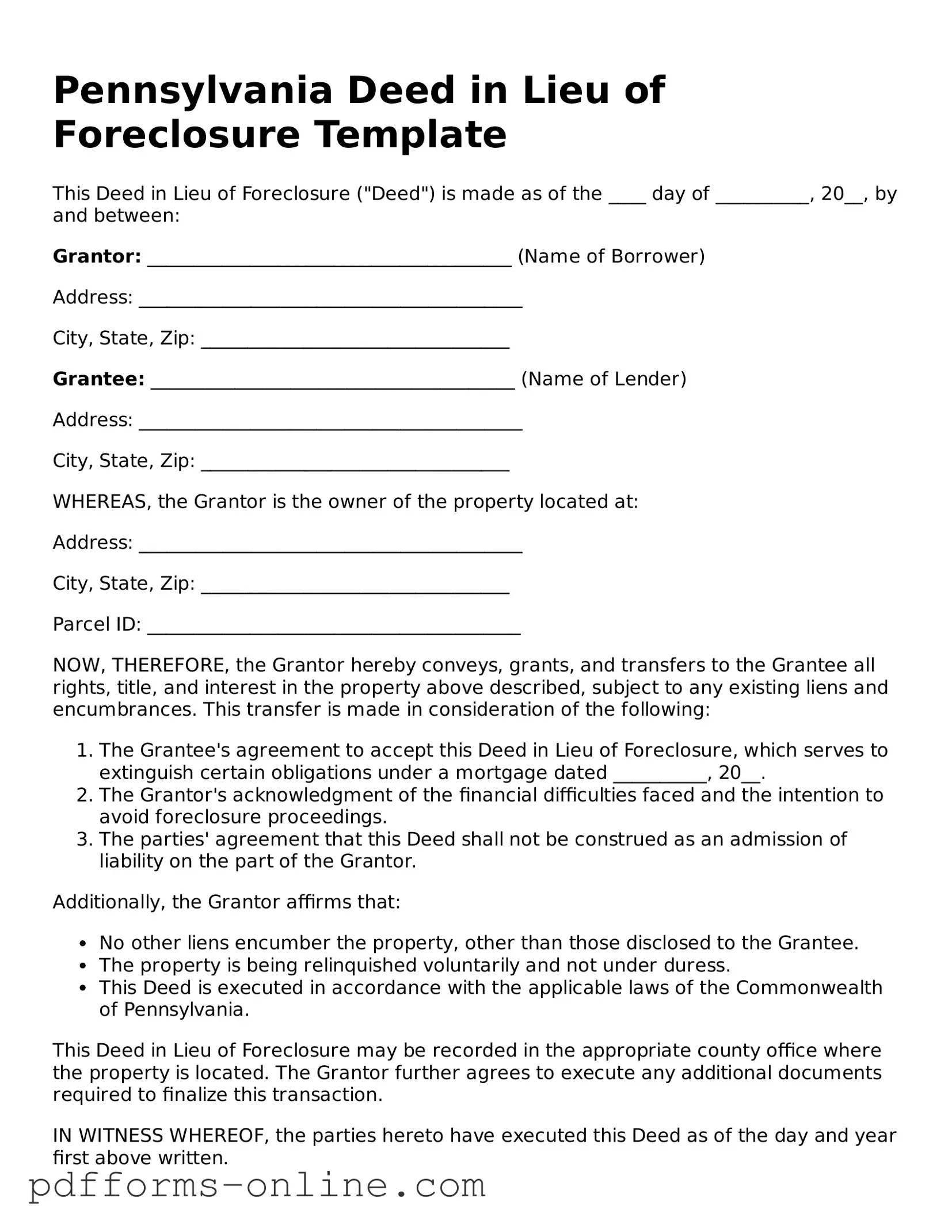Pennsylvania Deed in Lieu of Foreclosure Template
This Deed in Lieu of Foreclosure ("Deed") is made as of the ____ day of __________, 20__, by and between:
Grantor: _______________________________________ (Name of Borrower)
Address: _________________________________________
City, State, Zip: _________________________________
Grantee: _______________________________________ (Name of Lender)
Address: _________________________________________
City, State, Zip: _________________________________
WHEREAS, the Grantor is the owner of the property located at:
Address: _________________________________________
City, State, Zip: _________________________________
Parcel ID: ________________________________________
NOW, THEREFORE, the Grantor hereby conveys, grants, and transfers to the Grantee all rights, title, and interest in the property above described, subject to any existing liens and encumbrances. This transfer is made in consideration of the following:
- The Grantee's agreement to accept this Deed in Lieu of Foreclosure, which serves to extinguish certain obligations under a mortgage dated __________, 20__.
- The Grantor's acknowledgment of the financial difficulties faced and the intention to avoid foreclosure proceedings.
- The parties' agreement that this Deed shall not be construed as an admission of liability on the part of the Grantor.
Additionally, the Grantor affirms that:
- No other liens encumber the property, other than those disclosed to the Grantee.
- The property is being relinquished voluntarily and not under duress.
- This Deed is executed in accordance with the applicable laws of the Commonwealth of Pennsylvania.
This Deed in Lieu of Foreclosure may be recorded in the appropriate county office where the property is located. The Grantor further agrees to execute any additional documents required to finalize this transaction.
IN WITNESS WHEREOF, the parties hereto have executed this Deed as of the day and year first above written.
_____________________________
Grantor (Signature)
_____________________________
Grantee (Signature)
Witnessed by:
_____________________________
Witness (Signature)
_____________________________
Date
